How to Wipe a Computer and Clean All Personal Data
There are a few reasons that you need to wipe a computer or laptop. Before you sell or give away your machine, for instance, you’d better clean up all your data, files, and software on your computer to avoid data leakage. Plus, wiping a computer is an essential way to troubleshoot a problem or error. This concrete guide explains the how-to for Windows 11/10/8/7 and Mac OS X respectively.
PAGE CONTENT:
Part 1: Why You Should Wipe Computer
Cleaning a computer is a process to permanently delete all data from a computer’s hard drive. It is different from simply deleting files or formatting a hard disk. The main reasons why you should do this include:
1.Protect sensitive information.
2.Improve computer performance.
3.Troubleshoot a problem, bug, or an error.
4.Remove malware.
Part 2: How to Wipe a PC
Microsoft keeps releasing new versions of Windows. At the same time, Microsoft added new features and improved the design of Windows. As a result, the workflow of wiping a PC is different depending on your Windows.
How to Wipe Your Windows 11
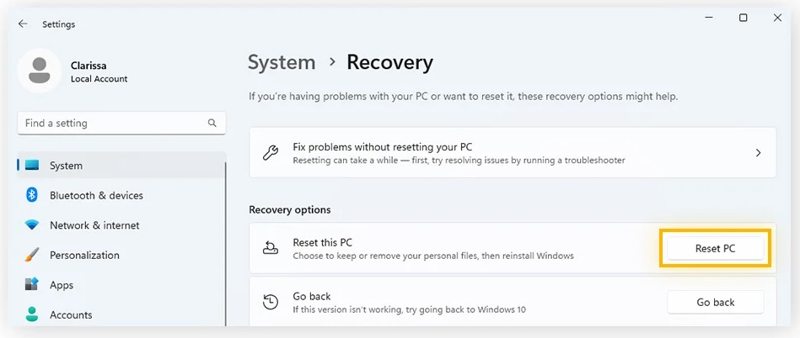
Step 1. Search for Settings in your Start menu, and open the Settings app.
Step 2. Choose System, and click the Recovery option.
Step 3. Click the Reset PC button under the Recovery options heading.
Step 4. Next, choose Remove everything. Then choose Cloud download or Local reinstall, and select Yes under Clean data.
Step 5. At last, click the Confirm button, hit Next, and press Reset to begin wiping your laptop immediately. When it is done, your computer will reboot as a new machine.
How to Clean Your Windows 10/8
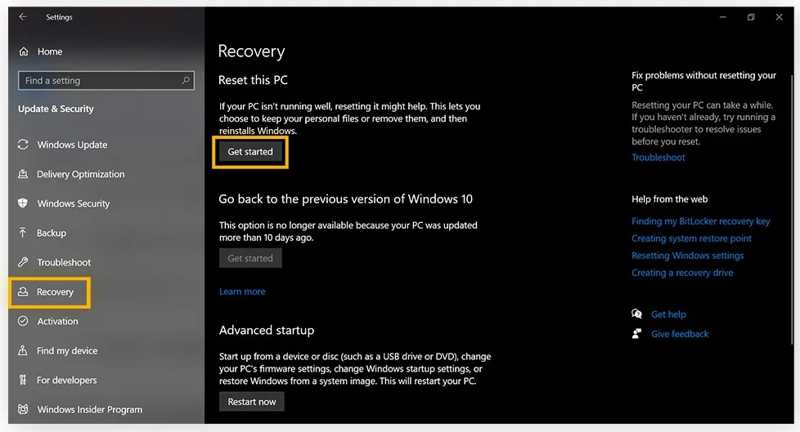
Step 1. Go to the Start menu, input Settings in the search box, and open the app from the result.
Step 2. Choose Update & Security in the Settings app, go to the Recovery tab on the left side, and click Get started.
Step 3. Next, click the Remove everything option on the Reset this PC dialog. Then follow the on-screen instructions to clean your computer.
How to Wipe Your Windows 7
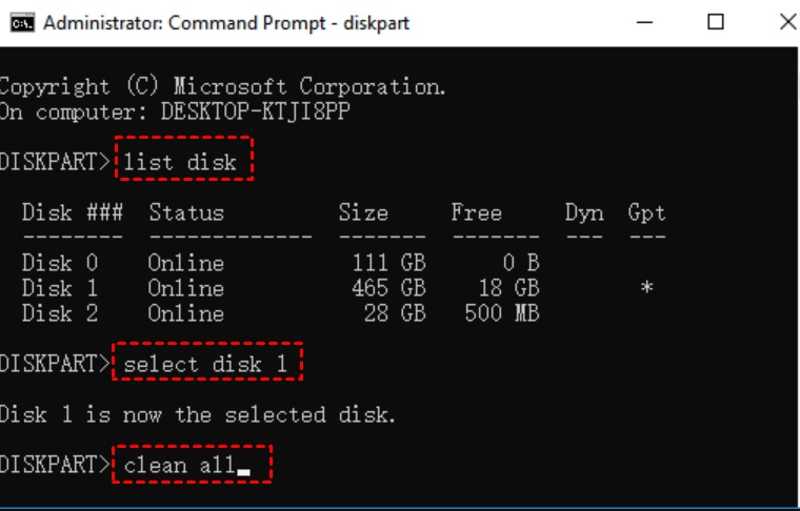
Step 1. Search for cmd in the Start menu, right-click on Command Prompt on the result, and select Run as Administrator.
Step 2. Input diskpart, press the Enter key, input list disk, and hit the Enter key on your keyboard to display the hard disks in your computer.
Step 3. Then input select disk 1 and press the Enter key to select disk 1.
Step 4. Next, input clean all, and hit the Enter key to clean up your computer’s disk. Then repeat the step 3 and 4 to clean up other disks.
Note: This way cannot wipe your boot disk.
Part 3: How to Wipe a Mac
Much like Windows, MacBook, iMac, Mac mini, and more, with different chips, can be wiped with different methods. Therefore, we demonstrate the workflows according to the chip.
How to Clean a Mac with a Silicon Chip
Step 1. Click the Apple menu, and choose System Settings.
Step 2. Choose the General tab, and click Transfer or Reset.
Step 3. Click the Erase All Content and Settings button. If prompted, enter your Mac password, and begin wiping your computer. This operation can also erase your iPhone.
How to Clean a Mac with an Intel Chip
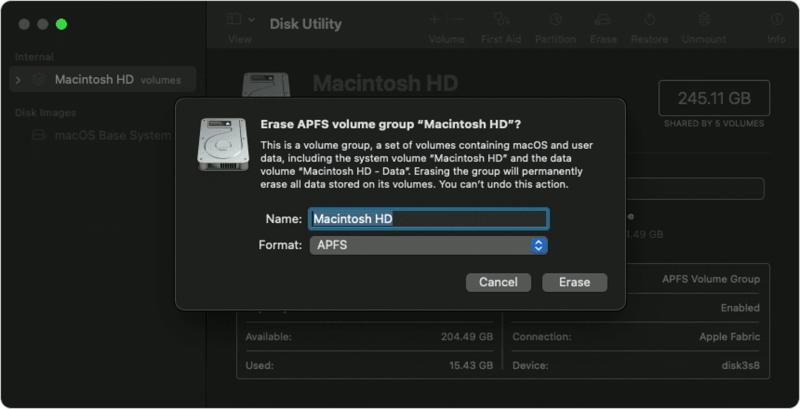
Step 1. Restart your Mac computer, and press the Command + R keys on your keyboard immediately until you see the Apple logo.
Step 2. Then the Utilities Window should pop up. Select Disk Utility, and click Continue.
Step 3. Highlight your hard drive under Internal, and click the Erase button in the toolbar.
Step 4. Next, select your drive name, choose APFS under the Format menu, and click Erase. Enter your Apple ID password or Mac passcode to verify your ownership and initiate wiping your computer.
Part 4: How to Clean a Chromebook
The built-in Powerwash feature on Chromebook is able to clean up all your personal data. Therefore, you don’t need extra software or hardware when wiping a computer running ChromeOS.
Step 1. Open the Settings app on your Chromebook.
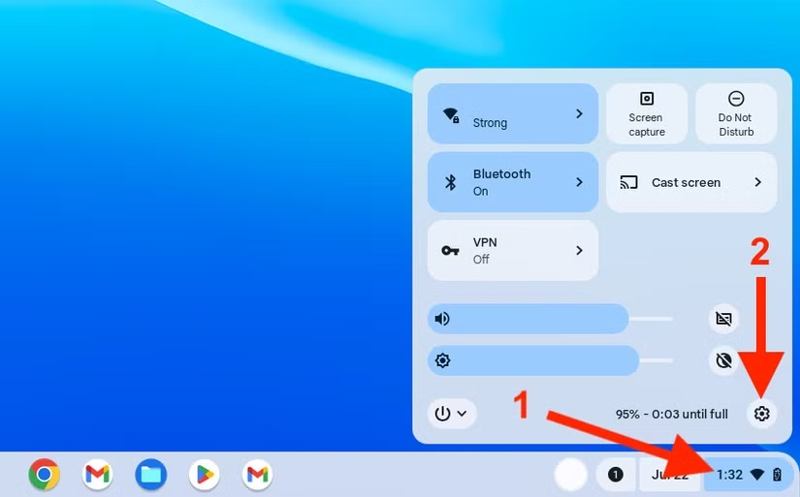
Step 2. Search for Powerwash in the search box on the top. Or navigate to System preferences, and find Powerwash.
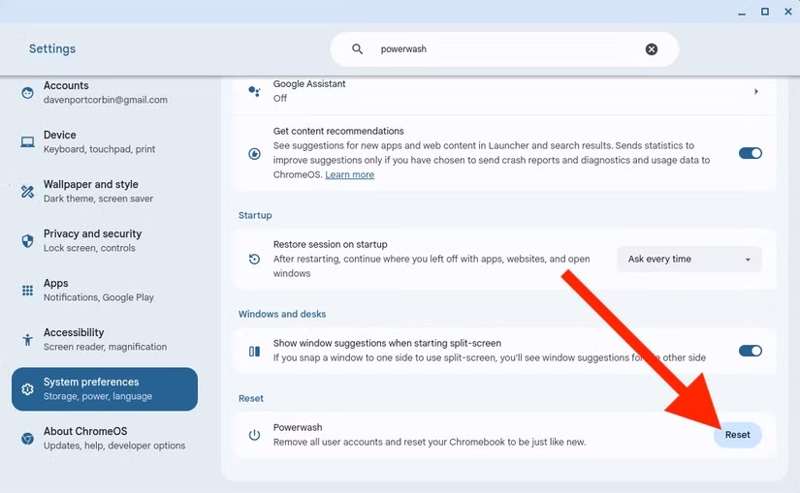
Step 3. Click the Reset button, and choose Restart on the pop-up dialog to boot into the Powerwash menu.
Step 4. Read the alert, click the Powerwash button, and hit Continue to begin to begin cleaning your computer.
Bonus Tip: How to Delete Files on Mac Without Wiping
If you just want to free up space and improve your Mac performance, you can delete unwanted files on your computer without resetting it. From this point, we recommend Apeaksoft Mac Cleaner. It allows you to manage large and old files on your MacBook.
The Easiest Way to Clean up Files on Mac
- Scan and delete large and old files on Mac.
- Preview files on your computer before deleting them.
- Clean up multiple files with one click.
- Support a wide range of macOS versions.
Secure Download

Here are the steps to delete unwanted files on your Mac:
Step 1. Install Mac Cleaner
Launch the best Mac cleaning application after you install it on your computer or laptop. Next, choose the Cleaner option in the home interface to move on.
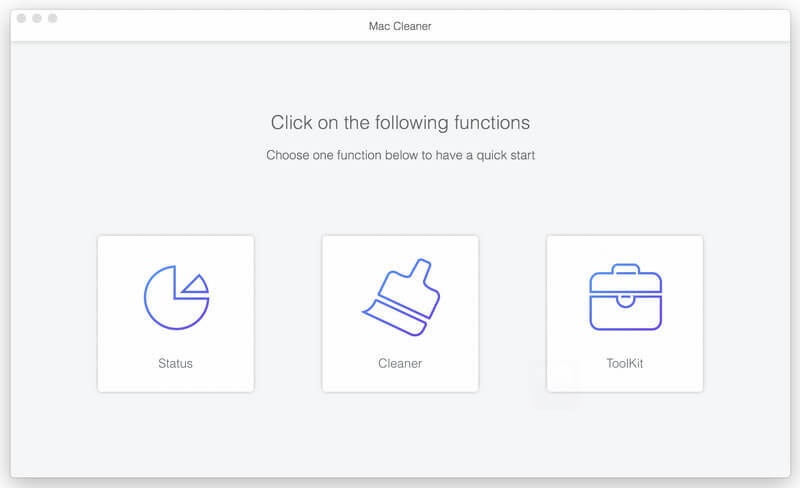
Step 2. Scan large and old files
Click the Large & Old Files option, and click the Scan button to begin looking for large and old files on your hard drive. When it is done, click View to move on.
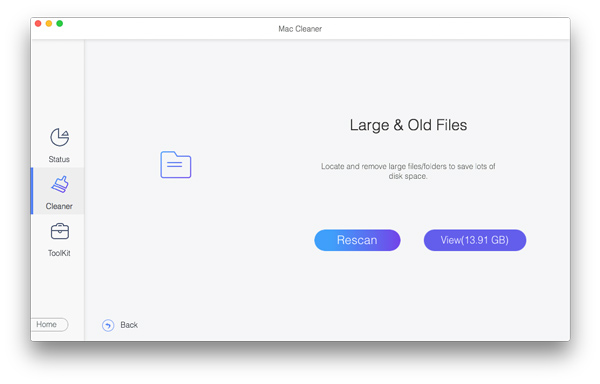
Step 3. Delete files on the Mac
Next, select a proper filter according to your needs. Tick the checkbox next to each unwanted file, and click the Clean button on this Mac cleaner.
Conclusion
Now, you should understand how to wipe this computer running Windows 11/10/8/7, macOS, and ChromeOS. You can follow our steps based on your operating system. Apeaksoft Mac Cleaner is the best way to clean up useless files and free up space on MacBook, iMac, Mac mini, and more. If you have other questions about this topic, please feel free to leave a message below this post.
Related Articles
"How do I uninstall an application on Mac?" This article will solve your problem with 5 practical methods and provide 6 considerate tips!
This article offers you three methods on how to uninstall NoMAD on mac completely and ensure no associated files are left behind.
This article offers you two possible solutions to uninstall Zoom on Mac, which can help you get rid of the software and the Zoom files completely.
How to completely remove Outlook from Mac? How do I uninstall and reinstall Outlook on Mac? Learn 2 easy ways to uninstall Microsoft Outlook on Mac thoroughly.

